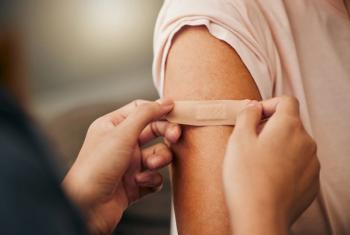
Certain marijuana types lead to chronic use
As more states legalize marijuana and the variety of products containing cannabis proliferates, the question becomes whether this will impact adolescent use of the drug and possibly lead to persistent use of cannabis. A new study in JAMA Network Open looked at how experimental use of 5 different cannabis products impacted progression of use.
As more states
The cohort included 2685 teenagers who attended 10 high schools in southern California. When the data collection began in the spring of 2016, all the participants were in the 11th grade. They were given follow-up surveys at 6 months in fall 2016 and at 12 months in spring 2017 that asked about cannabis consumption over the previous 30 days. All participants were considered light or nonusers of cannabis products (ie, ≤2 days in the past 30 days).
At the beginning of the study, use on 1 to 2 days was reported by:
· 158 students for combustible cannabis;
· 90 students for blunts;
· 78 students for cannabis edibles;
· 17 students for vaping cannabis;
· 15 students for cannabis concentrates.
Combustible cannabis and concentrates may lead to habitual use
Statistically stronger links between baseline use and subsequent use at the 6-month and 12-month follow-ups were seen with combustible cannabis use (odds ratio [OR], 6.01; 95% confidence interval [CI], 3.66-9.85) and cannabis concentrates (OR, 5.87; 95% CI, 1.18-23.80) when compared with the use of edible cannabis (OR, 3.32; 95% CI, 1.86-5.95) or blunts (OR, 2.77; 95% CI, 1.45-5.29); P for comparison <.05. Vaping cannabis showed no significant difference (OR, 5.34; 95% CI, 1.51-11.20).
Additionally, the association of cannabis use at baseline with mean days of use at follow-up was significantly stronger for cannabis concentrates than for the other cannabis products. Participants who used concentrates on 1 or 2 days in the past 30 days at baseline were found to use cannabis concentrates an average of 9.42 days (95% CI, 2.02-35.50) in the past 3 days at both follow-ups (P for comparison <.05).
The researchers concluded that efforts to control cannabis in adolescents should be more targeted, with a focus on combustible cannabis and cannabis concentrates.
References:
1. Barrington-Trimis JL, Cho J, Ewusi-Boisvert E, et al. Risk of persistence and progression of use of 5 cannabis products after experimentation among adolescents. JAMA Netw Open. 2020;3(1):e1919792.
Newsletter
Access practical, evidence-based guidance to support better care for our youngest patients. Join our email list for the latest clinical updates.











